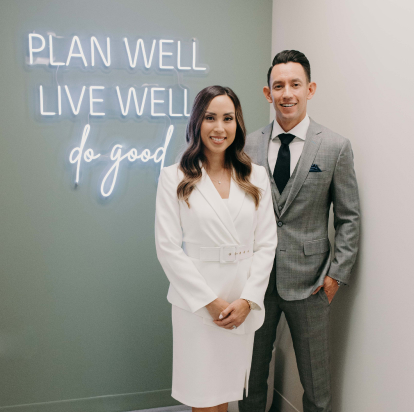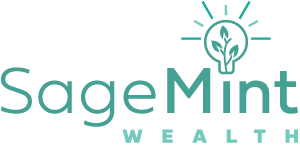
What High Earners Need to Know About the Alternative Minimum Tax (AMT)
September 21, 2023
The Ultimate Year-End Financial Planning Checklist for High Earners
October 18, 2023It’s common for employees to focus on base salary, bonus, and even company equity when evaluating overall compensation. Yet employee benefits can be tremendously valuable as well, especially as these perks accumulate and compound over time.
Indeed, a robust benefits package can significantly boost total compensation, enhance your quality of life, and lead to greater career satisfaction. In some cases, taking advantage of your benefits can even make it easier to plan for and achieve your financial goals.
To make the most of your total compensation plan, it’s essential to understand your benefits package and how it can contribute to your financial well-being.
Here are 8 tips that can help you maximize your employee benefits:
#1: Understand Your Employee Benefits Package
Your employer may offer a variety of benefits, from retirement plans and stock options to health insurance and wellness perks. To maximize your employee benefits, the first step is to gain a clear understanding of your options.
Whether you’re evaluating a new job offer or preparing for your company’s open enrollment period, be sure to familiarize yourself with your employee benefits and when they become available to you. You may find a description of your benefits package in your employee handbook, or you can consult your human resources department for any additional information and guidance.
#2: Maximize Employer-Matching Programs
Employer-matching programs for retirement and health savings accounts can be an invaluable component of your overall compensation. If your employer offers such perks, it’s crucial to contribute the minimum amount to receive the match. Failing to do so means leaving free money on the table.
Consider the following example:
Suppose your employer matches your 401(k) contributions up to 5% of your annual salary, which is $200,000. If you contribute 5% of your salary, or $10,000 each year, your employer will match your contributions up to $10,000, which can significantly boost your retirement savings over time.
Some employers also match contributions to Flexible Spending Accounts (FSAs) and Health Savings Accounts (HSAs). If these options are available, contributing enough to receive the full match is equally important in amplifying the value of your comprehensive benefits package.
#3: Take Advantage of HSAs and FSAs
Health Savings Accounts (HSAs) and Flexible Spending Accounts (FSAs) are valuable tools that allow you to set aside pre-tax dollars for qualified medical expenses. They’re particularly advantageous if you have a high-deductible health plan.
Both HSAs and FSAs can cover an array of additional medical costs that traditional health insurance may not, such as dental care, eyewear, and physical therapy. However, they can also offer meaningful tax benefits:
- HSAs: These accounts offer a triple tax advantage—your contributions are tax-deductible, the account balance grows tax-free, and withdrawals for qualified expenses are also tax-free.
- FSAs: Contributions to an FSA are pre-tax, thereby reducing your taxable income. However, these accounts usually have a “use it or lose it” rule, meaning you should plan to use the funds within the specified plan year to avoid losing this benefit.
Keep in mind that both types of accounts have annual contribution limits, which may vary annually. If your employer provides these options as part of your benefits package, taking full advantage of them can offer substantial savings and contribute to your overall financial well-being.
#4: Protect Your Earning Potential with Disability Insurance
Your ability to work is arguably your most valuable asset as you progress in your career. While generous salaries and other financial perks can make for a comfortable lifestyle, they often come with financial obligations that can be challenging to meet if you’re unable to work.
Many employers recognize this risk and offer disability insurance as part of their employee benefits package. In fact, 78% of employers in the U.S. offer short-term benefits, and 63% offer long-term disability benefits, according to a survey by the International Foundation of Employee Benefit Plans.
Disability insurance can provide a financial safety net if you’re unable to work due to illness or injury. However, employer-provided disability insurance often covers just the basics, so you may want to consider supplementing this coverage with an individual policy that’s tailored to your specific circumstances.
Additionally, keep in mind that disability insurance may have tax implications. If your employer pays the premiums, any benefits you receive will be subject to taxes. On the other hand, if you pay the premiums yourself using after-tax dollars, the benefits you receive are typically tax-free.
#5: Consider Your Life Insurance Needs
Employer-sponsored life insurance plans can offer a convenient and cost-effective way to secure a financial safety net for your family. However, coverage amounts for these policies are often capped, potentially falling short of your needs.
At the same time, employer-sponsored life insurance plans may not always be portable. That means if you change jobs, you’re likely to lose your coverage.
To maximize your employee benefits, you may want to consider purchasing a supplemental life insurance policy that provides more comprehensive coverage. This may also give you more confidence knowing you have adequate coverage whether you stay at your current job or pursue a new opportunity.
#6: Look for Wellness Perks for More Work-Life Balance
As employees place a greater emphasis on work-life balance, many companies are going the extra mile by offering various lifestyle benefits. These perks may include gym membership reimbursement, financial education programs, or sabbatical leave and aim to enhance the sustainability and enjoyment of daily work-life.
Benefits can change from year to year, so be sure to regularly review your benefits package for new offerings. Taking advantage of these lifestyle perks can help you make the most of your employee benefits, improve your quality of life, and even lead to greater job satisfaction over time.
#7: Note Which Employee Benefits Are Portable
It’s not uncommon to change jobs at least once over the course of a career. Thus, it’s essential to know which employee benefits are portable, so you don’t miss out on valuable perks if you make a career move.
For example, make sure you understand your 401(k)-vesting schedule if you’re considering a job change. Leaving before reaching full vesting could mean losing some, or even all, of your employer’s contributions, which may be a considerable setback.
Meanwhile, Health Savings Accounts (HSAs) are generally portable, meaning you can take your funds with you when you switch jobs. However, depending on your new health plan, you may not be able to continue contributing to your HSA.
Conversely, Flexible Spending Accounts (FSAs) typically don’t carry over. You’ll need to use the funds before your employment ends, or you’ll forfeit them.
#8: Regularly Review Your Employee Benefits Package
Employee benefits tend to evolve as companies update their offerings. Plus, your personal needs may change as you progress through your career. To ensure you’re getting the most out of your benefits, make it a habit to review your package at least annually.
Open enrollment season, which typically takes place in November and lasts for two to four weeks, can be an ideal time to update or make changes to your benefit selections. However, the exact timing depends on your employer, so be sure to consult your HR department so you don’t miss this crucial window for adjustments.
SageMint Wealth Can Help You Make the Most of Your Employee Benefits
By proactively managing your employee benefits, you can maximize your total compensation and improve your financial and overall well-being. Over time, taking advantage of the additional perks available to you can provide a meaningful tailwind for your financial plan.
While these tips can provide a useful roadmap, seeking professional advice can help you further optimize your benefits. SageMint Wealth can help you understand your options and prepare for open enrollment, so you can feel confident you’re making the most of your employee benefits.
To align your benefits selections with your financial goals or begin your financial planning journey, please contact us. We’d love to hear from you.
Related posts
Live Well. Do Good.












